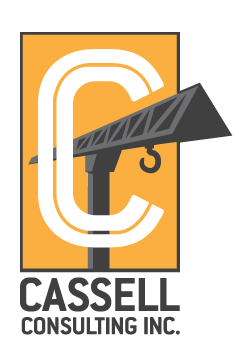Mise-en-place, or, Slow Down to Speed Up
What do construction, software development, and cooking have in common? To the casual observer: very little. Yet, all three disciplines stand to reap great gains when everything’s in its right place: whether it’s in your estimating database, test-driven development, or the kitchen. No, this isn’t a post about that excellent Radiohead song; rather, it’s regarding the wide-ranging benefits of mise-en-place.
What is Mise-en-place?
Mise-en-place is an expression, borrowed from the French culinary tradition, which translates as ‘put in place.’ The phrase hearkens back to the era of Georges-Auguste Escoffier, the patriarch of the French ‘brigade system’ of kitchen hierarchy, and hailed as the “Henry Ford of the kitchen” (Daley). In this context, mise-en-place is the work that precedes a particularly busy period (read: lunch/dinner rush) for chefs: gathering and preparing ingredients, arranging tools, and the like. When employed properly, this means a single chef won’t have to move more than a few inches to reach all of the implements and ingredients she’ll need for a dish; some chefs-in-training are even tasked with cooking blindfolded (Charnas).
The Philosophy In the Kitchen
This philosophy extends far beyond the kitchen, you can apply to your home office, day’s schedule, or items on a desk. “You mise-en-place your life, you set up your chef whites, your shoes are shined, you know everything that you need every step of the day… It’s a very … Zen-like thing:
- Knives are clean, cutting board clean
- Space to work clear, mind clear
Moreover, mise-en-place values extra preparation, ahead of time, so that workers can be ruthlessly efficient when the kitchen gets hectic, and can take unforeseen circumstances in stride.
Software Development
One approach, to software development, known as Test-First Development (TFD), simplifies the often lengthy process of ‘debugging,’ or troubleshooting, the code. Rather than debugging the whole program at once, the developer creates a test case, then writes just enough code to keep the test from failing. She then refactors the code, rinses, and repeats. It’s a strategy that usually results in more work at the outset, that’s not, strictly speaking, ‘production code’. But “as a result you will always be improving the quality of your design, thereby making it easier to work with in the future” (Wambler).
Construction
Just as a chef shouldn’t stop to debone a chicken during a lunch rush, and a developer shouldn’t refactor an entire program during a sprint cycle, the height of a contractor’s busy season is not the time to be trying out new programs, or reorganizing cost codes. Stopping work on an estimate to reorganize your phase codes isn’t just frustrating, it stops you from getting more bids out the door. Simply stated, inefficient infrastructure in the office means less work for your teams in the field.
So, how do you mise-en-place the estimating process? It starts with the correct software for the job, and learning how to use it before your estimators have a heavy workload. Cassell Consulting can help you select the best software tools for your company’s size and specialty. We also offer training classes, to help you set your system up right, giving you a clean and well-organized digital space for your estimating operations. We can also help you refactor your accounting database, to ensure it’s well organized ahead of your busy season.
The 3 Main Benefits:
Whether you’re an estimator, software developer, or chef, the quality of your work reflects the preparation you put into it. The benefits of slowing down to prepare, so that you can work faster during production, cannot be overstated. By applying mise-en-place, we can
- Get more work done
- Produce a better product
- Have more time and energy for family, friends, and recreation
Isn’t that the bottom line improvement we’re looking for?
WORKS CITED
Charnas, Dan. “For A More Ordered Life, Organize Like A Chef.” NPR. NPR, 11 Aug. 2014. Web. 09 Apr. 2015.
Daley, Bill. “Culinary Giant Escoffier: The Chef Who Revolutionized French Cuisine.” Chicago Tribune. Tribune Newspapers, 15 Feb. 2012. Web. 09 Apr. 2015.
Wambler, Scott. “Introduction to Test Driven Development (TDD).” Agile Data. Ambysoft, 1 Jan. 2015. Web. 09 Apr. 2015. <http://agiledata.org/essays/tdd.html>.
By Andy Helmsworth, who started at Cassell Consulting is January of 2015. He is a big fan of music and books, traveling, backpacking, and sharing good food and beer with friends. Andy attended Curtis Institute of Music in Philadelphia for two years playing oboe then went off to complete his Bachelor Degree at the University of Oregon, majoring in Anthropology. His previous work experience for a web design firm expanded his understanding of markup and programming languages which paved the way and prepared him for the programming work he does here at Cassell Consulting.




